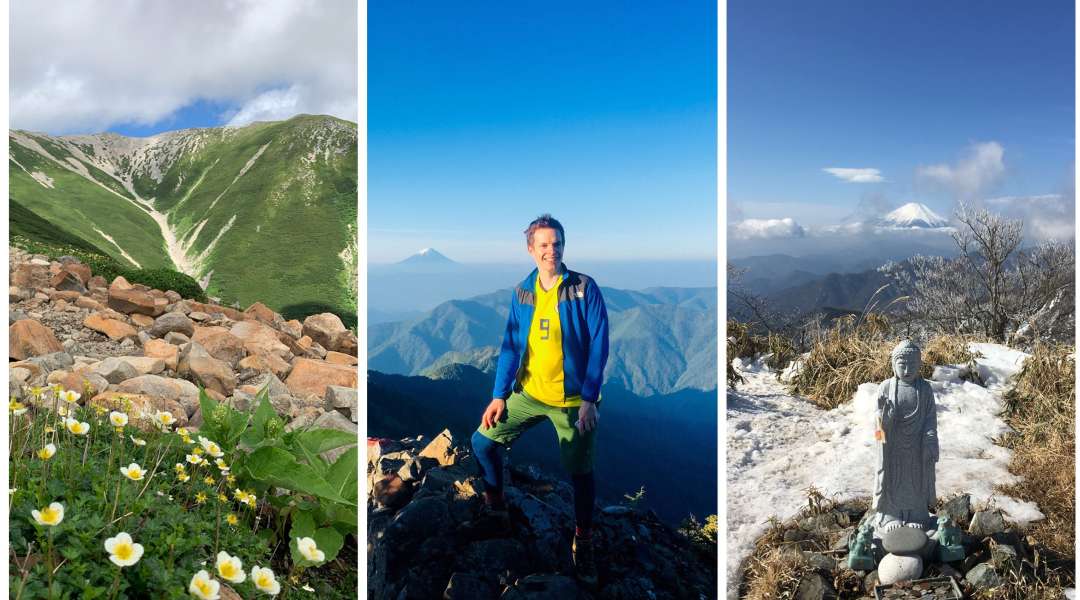
The desire to try something different can lead us in many directions, Tom Mayes took up Japanese as something 'new' in college which changed the tracks of his life. One of the founding creators of the Experience Japan Exhibition which inspires UK students to come and study in Japan, he wanted to forge new connections between the two countries closest to his heart.
He's been close to nature ever since he was a child when his whole family used to go for walks around the Lake District and the Peak District. However, his interest in hiking in Japan was sparked by the stunning sunset view behind Nagano's Mt. Asamayama he witnessed from his shinkansen seat. This image has inspired him to hike Mt. Asamayama later that year and he's been hooked ever since, now hiking his way through the list of Japan's 100 Famous Mountains.
Hi, thanks for talking to us today. Could you tell us a little about yourself?
I'm originally from Manchester, United Kingdom, and have been living and working in Japan for the past 15 years. My career started in the public sector, working for the regional government in Kyoto on the JET Programme. I followed that up with 7 years at the British Council where I promoted education exchange between Japan and the UK. I currently head up the learning function at the Tokyo office of a major global pharmaceutical company. I am passionate about supporting the growth of others and I am fortunate to have been able to do this throughout my career to date.

How did you end up working and living in Japan and what was it like?
At my sixth form college in Manchester we had a teacher from Japan who provided extra-curricular Japanese language classes. I am always keen to try something 'different' and so applied for the class. I was the only student who did as such and as a result I had the luxury of 1:1 Japanese tuition for two years! My teacher introduced me to the many fascinating, often paradoxical aspects of Japanese society and my interest was piqued to the extent that I decided to major in Japanese at university. Things naturally developed from there.
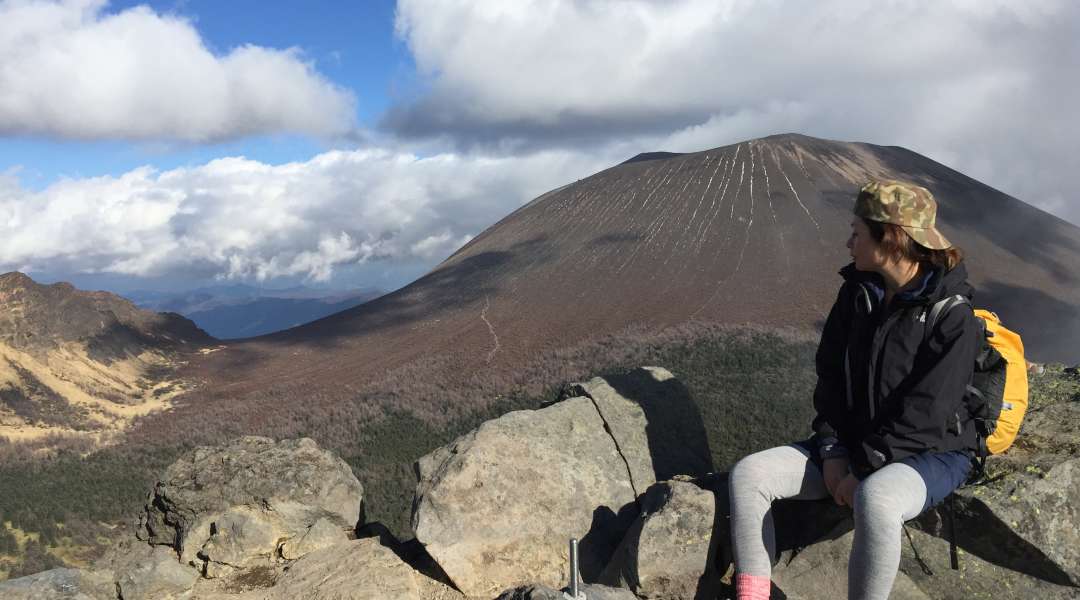
What’s your favourite memory from living in Japan?
With 15 years of memories this is a particularly tough question to answer! I feel obliged to say meeting my wife for the first time (she was my boss when I was working at Kyoto Government...and remains my boss to this day!) but as she probably won't be reading this I will go with something else.
The memory in question actually took place in the UK. In 2016 I designed and delivered the first large scale study in Japan event in London - the Experience Japan Exhibition. In collaboration with leading Japanese universities we put together a really exciting one day programme of talks and workshops to inspire UK students to come and study in Japan. On the day of the event I remember being really nervous just before the doors opened - would anyone actually come? In the end over 500 people took part and we received overwhelmingly positive feedback, with some students saying they had made up their mind to go and study in Japan. It was an amazing feeling to be able to give back to Japan after the life-changing experiences it has provided me over the years and to bring my two 'home countries' closer together.
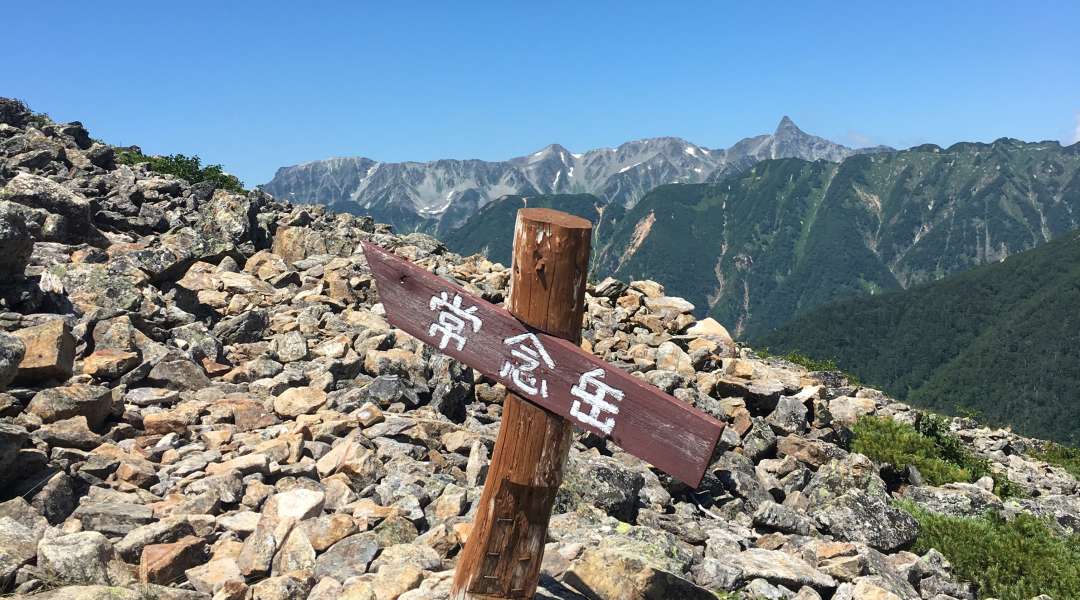
We have heard that you are an avid hiker. How did this hobby come about?
I have always loved the outdoors and being at one with nature. This is likely a result of my upbringing when my dad used to take the family for walks in the Lake District and Peak District. However, I only really became an 'avid' hiker from 2014. The trigger was Asamayama, a volcano on the outskirts of Karuizawa in Nagano. Returning to Tokyo from a New Year's trip to the Japan Sea coast on the Nagano Shinkansen, I vividly remember looking out of the window and seeing the sun set behind Asamayama. The silhouette of the mountain was breathtaking and I made it my mission to hike to the top of it that year. I did and the views from the summit did not disappoint. I was hooked from that day onwards!
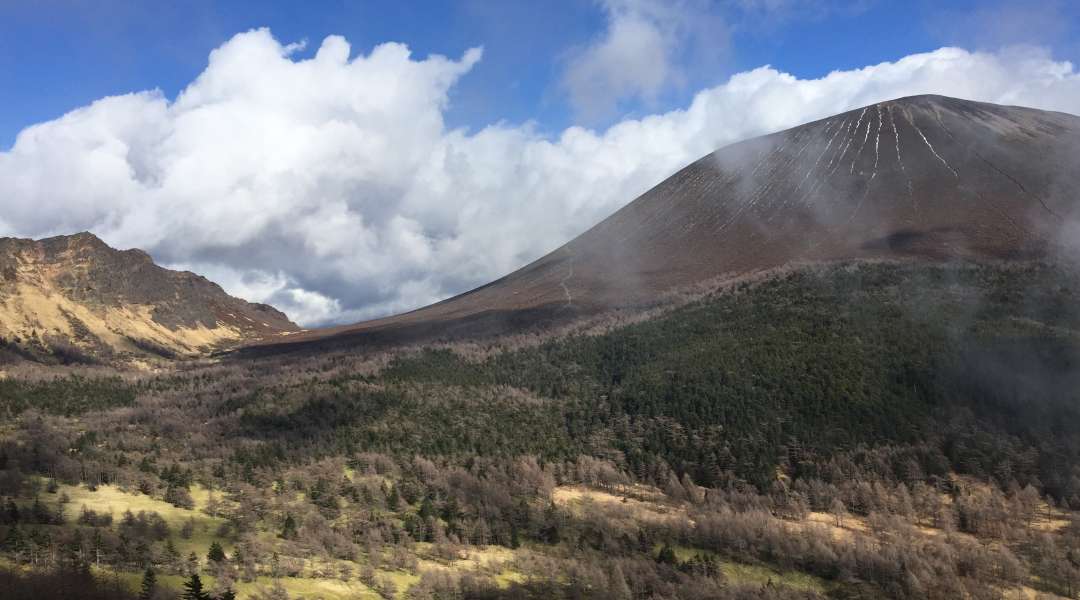
You are currently trying to hike all 100 Famous Japanese Mountains. What inspired you to start this adventure and how far along are you at the moment?
The 100 Famous Mountains were selected as Japan's finest in terms of route, scenery, variety and adventure by Kyuya Fukuda in his 1964 book of the same name. Asamayama is included in the 100, something that I only discovered after the hike when I picked up a pin badge of the mountain at a shop near the trailhead that indicated its elevated status. The hike was so enjoyable I decided to hike the other 99! I am currently up to 66, so one third to go, and have collected a pin badge from each mountain to use as evidence! Collecting a pin badge at the end of each hike is almost as rewarding as the hot spring and cool beer that I tend to indulge in after the walk...but not quite!
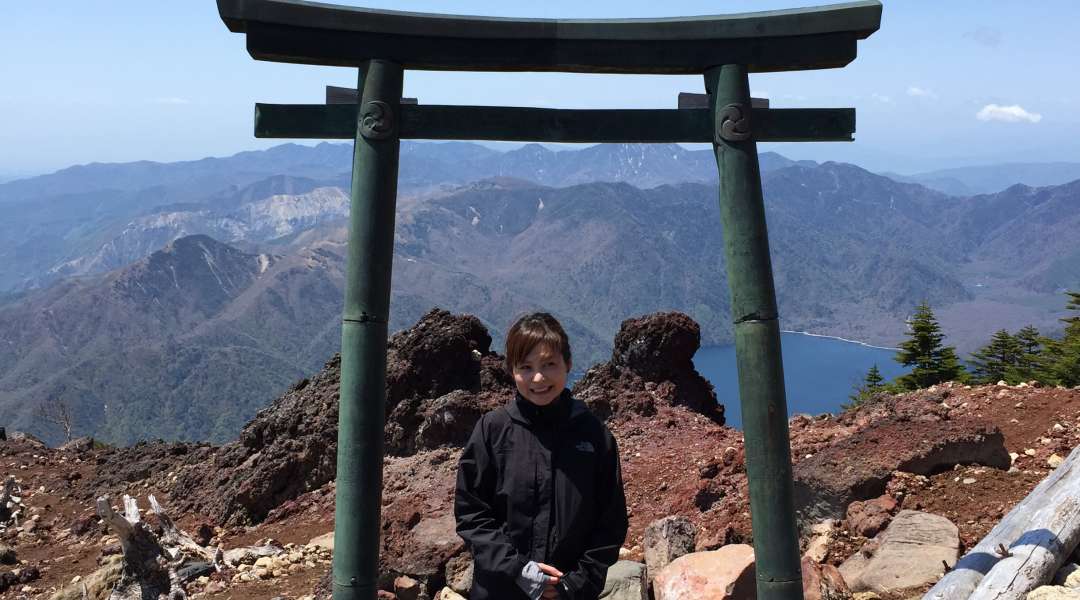
What’s your favourite area for hiking in Japan and why?
This is another tough question! There is such variety in the hiking areas across the country that it is hard to pick a favourite. From tropical, jungle-like mountains to the south in Yakushima to the fir covered mountains home to grizzly bears to the north in Hokkaido, Japan's mountains boast incredible diversity. The Northern Alps in Nagano is the most famous area for hiking and is undeniably spectacular. However, my personal favourite is the Southern Alps, the huge range that rises from the coast in Shizuoka and continues all the way up to Yamanashi. The Southern Alps, particularly the middle and southern parts of the range, are not as well-trodden as their northern neighbor and give you the sense of being somewhere genuinely remote despite their relative proximity to Tokyo. In particular, I recommend the traverse from Shiomi-dake to Kita-dake which can be done in three days and takes in the second and third tallest mountains in Japan (Kita-dake and Aino-dake). If you do this traverse make sure to spend one night at the Kuma no Daira Hut which has an amazing deck for lounging around with a cool beer while soaking up the 3,000m plus mountain vistas.

Is there anything that surprised you while hiking in Japan?
As you might expect, everything about hiking in Japan is incredibly well organized! From the well-signed routes to the orderly mountain huts, everything has been thought through. At times this can be a source of frustration for visitors from countries with a more relaxed approach to hiking. I have found myself being cautioned on a number of occasions for arriving at a hut late or without a booking, for talking after lights out, and for putting my tent up in the 'wrong' place, among others! At times like this you just have to remind yourself that these rules are in place for the collective good and to provide the best possible experience for all hikers (not to mention protecting nature) - a very Japanese approach.
One pleasant surprise from hiking in Japan is the chance meetings it throws up. There is often a real sense of camaraderie in the huts and campsites on the peaks. This is especially the case on the tougher climbs, where the brave few that have survived the ascent are keen to talk and share their elation at having made it to the top! Living in Tokyo, spontaneous chats with strangers are few and far between so I really enjoy this aspect of hiking - it has enabled me to see a more open side to the Japanese. The best example of this came on a hike we did in the Mid-Apls in Nagano when we were forced to spend the night in a shelter because we were running behind schedule and were not going to make it to the full board hut that we had originally booked. We had no food reserves and noticing our situation the other hikers took pity on us and inundated us with food including curry, cous-cous, pasta and rice balls! Fortunately I had a flask of whisky so I was able to return their kindness with alcohol!

What places would you recommend for people who are visiting Japan for the first time and want a taste of the mountains?
For people flying into Tokyo I would recommend the Nikko National Park. Three of the one hundred famous mountains are located in the park - Nantai-san, Nikko Shirane-san, and Nasu-dake and can be reached by public transport (train and bus) in around three hours from Tokyo. Nantai-san is a perfect conicular mountain overlooking the Shuzenji lake that can be climbed in 3-4 hours. Nikko Shirane-san and Nasu-dake both have cable cars that take you part of the way up to ease the ascent somewhat! At 2,578 metres Nikko Shirane-san is the highest peak in the Kanto region and commands great vistas of the Kanto plain and surrounding mountains. Nasu-dake is an active volcano that still belches out gas from its underbelly and provides an otherworldly experience, especially in autumn when the maple leaves are in full colour. All three mountains have hot springs near the trailheads so you can reward yourself with a long soak at the end of your hike and you can combine your trip with a visit to the Toshogu Shrine in Nikko if you fancy doing some sightseeing too.

Where are you hoping to visit next?
This year I hope to do the 'Japanese Matterhorn' - Mount Yari in the Northern Alps. I've spent many a hike admiring its pointy peak from afar and feel the time has come to finally experience it up close, even if the final ascent up a series of ladders does look a little scary! People often ask me when I will climb Mount Fuji. The answer is that I am saving this until last - it will be my 100th mountain!

This month we’re focusing on the word ‘kuidaore’, meaning eating until you drop. Winter is the time of hibernation and great festive food after all. What Japanese food could you eat till you drop?
My in-laws are from the Osaka/Kyoto area and so I am very familiar with the 'kuidaore' culture! We often spend new year at their house on the outskirts of Kyoto and I am always very well fed! My favourite meal is Sukiyaki - pan fried beef with sauce and vegetables dipped in raw egg. My father-in-law always prepares it in the Mishima-tei style - a famous Sukiyaki restaurant located in the Teramachi shopping arcade in Kyoto. This involves first melting sugar in the pan before frying the finely marbled wagyu beef. It is a taste sensation of which I will never grow tired!
If you are interested in checking what Tom has been up to, take a look at his Instagram.
To stay up to date with all the latest happenings in Japan follow us on Instagram, Facebook or Twitter!

















































